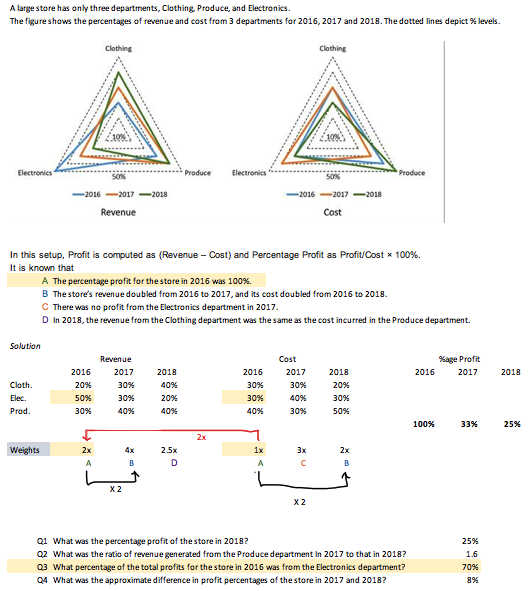Although the CAT pattern has changed, the one thing that would not change is a golden mantra that every CAT aspirant should be aware of if not already. Without beating about the bush, here it goes:
"1-2 questions in about 2-3 sets can be cracked without solving the entire problem set." This simple trick and an enhanced concentration helped me raise my score from an
84.1%ile in CAT 2018 to a 99.5%ile in CAT 2019 in the DI/LR section.

Often, we give up on sets midway. We put in 5-7 minutes, fiddle with the information, abandon the set, and move on to the next set. But you must scan the questions very carefully. It's an easy possibility that you can
answer 1-2 questions of the set using only the half or partially cracked set.
Putting this into perspective, consider a typical CAT exam that has about 8 DI/LR sets. Often there are 1-2 questions in these sets that can be answered by solving only 20%-60% of the set. Say persons A, B, C, D, E, one each is a doctor, engineer, lawyer, botanist, and farmer, and live in cities V, W, X, Y, Z, in no particular order. Questions like these ask you to match people to their profession, cities, and their birthdays. Please note that all these 20 variables don't require to be mapped to each other to be able to answer the questions that follow. More often than not, you can solve the questions with partial information.
Some questions could even be very straightforward and require minimal
standalone working, especially in DI sets. Standalone working means they are independent of other information given in the set. Consider the revenue-cost DI set 8 in the CAT 2019 exam, slot 2. A quick snapshot of the cracked set is as below. We have 4 statements, marked A, B, C and, D, and the plots to deduce the information. The set is followed by 4 questions.

As highlighted, the weights 2x, 4x, and so on have been deduced using statements A, B, C, and D, and the corresponding statement used has been indicated too. These are the only inferences required to crack the set.
Say a student is short on time and cannot make all the deductions of weights. But only Statement A, i.e., "The percentage profit for the store in 2016 was 100%." is sufficient to solve the third question "What percentage of the total profits for the store in 2016 was from the Electronics department?". This question uses only the yellow highlighted information in the picture.
- Statement A
- 50% and 30% figures for 2016 electronics department
- Deducing 2x and 1x from statement A
One doesn't even require to find yearly percentages for all 3 departments, hence
avoiding writing down 16 other numbers! This easily
saves you precious 2 minutes. Question 3 is also
independent of statements B, C, and D. On a quick calculation: (50%*2x - 30%*1x) / (2x-1x) gives you 70%, which is the answer. These are easy 3 marks that should be seized.
The trick can be extended to say that if you're in the last 3-5 minutes of the DI/LR section and think it would be useless to pick up a new set. I urge you not to make a mistake and still
start attempting any leftover set and glance at the questions. There's a high probability that you can solve at least 1 of them, gain the extra 3 marks, and they end up
making the difference that's needed to make to your dream school. So gear up and ensure you
eyeball all DI/LR questions to spot any such standalone or partial information questions! May the force be with you.
***
Watch how Kritika cracked the CAT in her second attempt and made it to IIM Bangalore!





